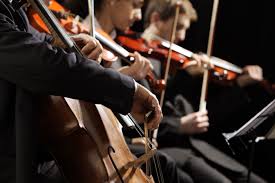By Dr Farrah Jawad
The MSc in Performing Arts Medicine (PAM) at UCL provides a great opportunity to appreciate the issues affecting the performing artist and draw on similarities between performing artists and athletes. Performing artists train for many hours, sometimes in suboptimal conditions, and are subject to acute and chronic injury and illness just like athletes. As a part-time PAM MSc student whilst continuing with my full-time Sport and Exercise Medicine training, I have been learning about these issues pertaining to the performing artist in lectures and in seminars.
 Last term we had a seminar with David Hockings, Principal Percussionist with the BBC Symphony Orchestra and Head of Percussion at the Royal College of Music, who talked to us about the challenges musicians can face, often rehearsing and performing for many hours with insufficient lighting, adjustable seating, carrying heavy instruments and equipment in between performances, and more. There are vast ergonomic differences between instruments that make up a percussion section, let alone the entire orchestra, and there can be great variation in the types of injuries performing artists can sustain subsequently. The same, of course, applies to different dance disciplines and the MSc in PAM is a chance to consider all of this.
Last term we had a seminar with David Hockings, Principal Percussionist with the BBC Symphony Orchestra and Head of Percussion at the Royal College of Music, who talked to us about the challenges musicians can face, often rehearsing and performing for many hours with insufficient lighting, adjustable seating, carrying heavy instruments and equipment in between performances, and more. There are vast ergonomic differences between instruments that make up a percussion section, let alone the entire orchestra, and there can be great variation in the types of injuries performing artists can sustain subsequently. The same, of course, applies to different dance disciplines and the MSc in PAM is a chance to consider all of this.
I am about to enter my second year of the part-time MSc PAM course, which can be taken full or part-time. There is also a postgraduate diploma course available. There are eight compulsory modules which include:
- Musculoskeletal and Neuromuscular Performance Related Injury
- Research Methodology
- Environmental Issues, Travelling and Touring, Governance and the Law
- Drugs and Disability within the Performing Arts World
- Performance Psychology
- Clinical Management of the Professional Voice
- Assessment and Rehabilitation of the Performing Artist
- Science of Dance and Music Performance
MSc students undergo a research project with a subsequent presentation and viva examination. Students have coursework and examinations throughout the year. Following the MSc, one could progress to further academic work such as a PhD.
More details on the MSc can be found via this weblink:
https://www.ucl.ac.uk/surgery/courses/msc-performing-arts-medicine/
The MSc in Performing Arts Medicine will add to one’s clinical practice and prospective careers may include working for orchestras, bands, dance companies and participating in the practitioners’ scheme at the British Association of Performing Arts Medicine (BAPAM).
See the BJSM articles below for some further reading on Performing Arts Medicine topics:
H Fredriksen, B Clarsen. Abstracts from the IOC World Conference on Prevention of Injury & Illness in Sport, Monaco 2014: 97: High Prevalence of Injuries in the Norwegian National Ballet. Br J Sports Med 2014;48:7 595-596
C Ekegren, R Quested, A Brodrick. IOC World Conference on Prevention of Injury & Illness in Sport: Posters: Epidemiology of injuries among elite pre-professional ballet students. Br J Sports Med 2011;45:4 347
D Hamilton, P Aronsen, J H Løken, I M Berg, R Skotheim, D Hopper, A Clarke, N K Briffa. Dance training intensity at 11–14 years is associated with femoral torsion in classical ballet dancers. Br J Sports Med 2006;40:4 299-303
Nolet, R. Virtuoso hands. Clin Rheumatol (2013) 32:435–438
************************************8
Dr Farrah Jawad is currently a ST5 doctor in Sport and Exercise Medicine and part time Performing Arts Medicine MSc student at UCL. She co-ordinates the BJSM Trainee Perspective blog.